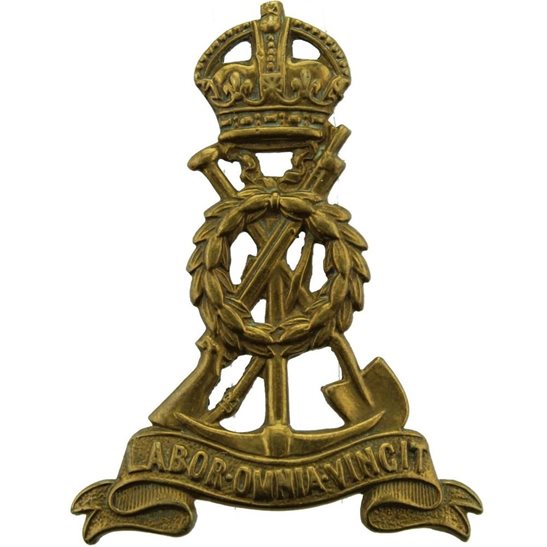Personal Details
Born: 15 January 1878 in Wakefield, Yorkshire and was baptised 17 March 1878 at All Saints Parish Church, Wakefield.
Family: He was one of 5 children born to Thomas Gosnay, a pawnbroker, and his wife Mary Ann. No marriage can be found for Ernest.
Residence: On the 1881 Census he was living at 59 Kirkgate, Wakefield. No other address can be found for him until Spring 1919 when his address was 10 Watergate, Whitchurch, Shropshire. Twenty years later he is still in Watergate, but at number 12.
Employment: In 1939 he was a manager in a grocer`s shop .
Died: Quarter 4 1952 in Wakefield, Yorkshire, aged 74.
Military Details
Regiment: Labour Corps (previously The King’s (Liverpool Regiment))
Rank: Private
Service Number: 48788 (previously 73588)
Date of Enlistment: Not known
Date of Discharge: Not known
Reason for Discharge: Not known
Ernest was awarded the Campaign Medals (British War Medal and Victory Medal).

The British War Medal (also known as 'Squeak') was a silver or bronze medal awarded to officers and men of the British and Imperial Forces who either entered a theatre of war or entered service overseas between 5th August 1914 and 11th November 1918 inclusive. This was later extended to services in Russia, Siberia and some other areas in 1919 and 1920. Approximately 6.5 million British War Medals were issued. Approximately 6.4 million of these were the silver versions of this medal. Around 110,000 of a bronze version were issued mainly to Chinese, Maltese and Indian Labour Corps. The front (obv or obverse) of the medal depicts the head of George V. The recipient's service number, rank, name and unit was impressed on the rim.
The Allied Victory Medal (also known as 'Wilfred') was issued by each of the allies. It was decided that each of the allies should each issue their own bronze victory medal with a similar design, similar equivalent wording and identical ribbon. The British medal was designed by W. McMillan. The front depicts a winged classical figure representing victory. Approximately 5.7 million victory medals were issued. Interestingly, eligibility for this medal was more restrictive and not everyone who received the British War Medal ('Squeak') also received the Victory Medal ('Wilfred'). However, in general, all recipients of 'Wilfred' also received 'Squeak' and all recipients of The 1914 Star or The 1914/1915 Star (also known as 'Pip') also received both 'Squeak' and 'Wilfred'. The recipient's service number, rank, name and unit was impressed on the rim.

